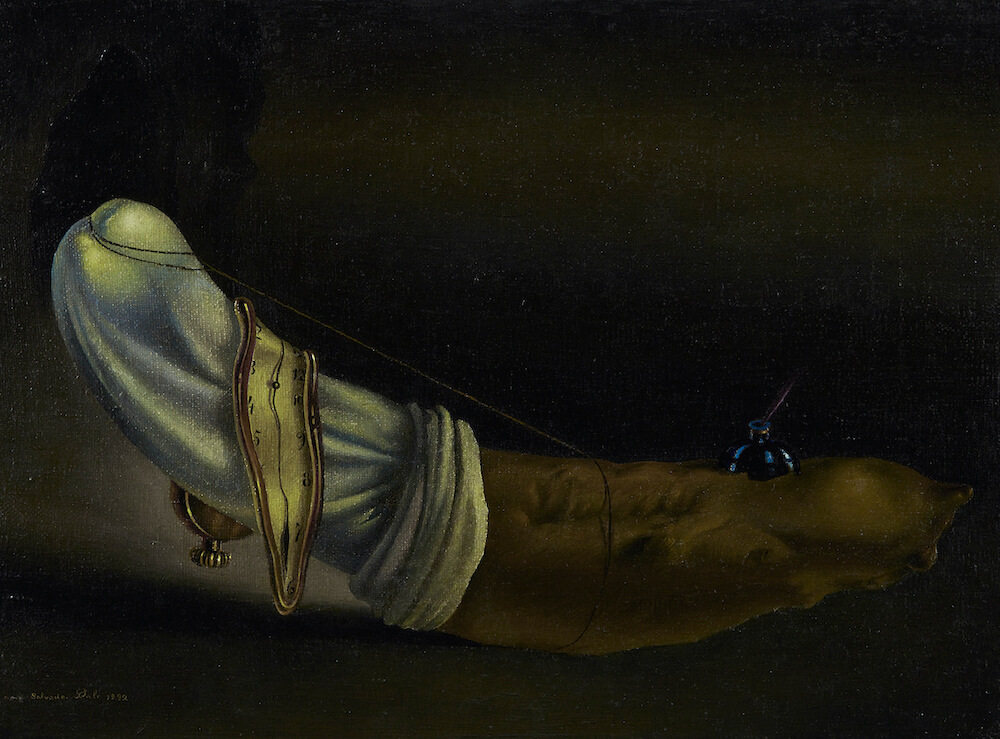Catalan Bread, 1932 by Salvador Dali

In this evocative painting of 1932 Dali returns to a theme that first captured his imagination in 1926, when he painted the austere Basket of Bread. Like the earlier still life, Catalan Bread is organized as a centralized composition in which objects are brightly illuminated against a dark, relatively uninflected ground. The absence of a site marker - a table top or shelf - renders the size and scale of the bread ambiguous, increasing its air of mystery. The picture belongs to a series of works from the period in which the form of the bread suggests an ossified landscape resembling the mineral encrustations of Cap Creus.
As with the majority of Dali's paintings of this period, the homespun Catalan Bread plays on the idea of sexual difference, or, more precisely, the collapse of gender boundaries. The pen and inkwell are conventional Freudian attributes for male and female, pointing us toward the bisexual ideal. Similarly, the decidedly phallic bread is sheathed in a cloth that suggests a certain indeterminacy, something mysterious, something to be desired, as in the veiled objects we have encountered in Shades of Night Descending. In an erotic text dated October 17, 1931, Dali described the transubstantiation of a crust of bread into the form of a vessel, imagining a perverse morphology of desire in which male collapses into female and their difference is literally consumed:
Suddenly, and with no associations at all involved, I recall that, during lunch, I set my mind... on the crusted end of the loaf of bread that seemed burned enough, which I had decided to bring over to the couch to be hollowed out with meticulous care so as to be turned into a sort of vase. Then, with even greater care, I would have chewed it with my front teeth, pierced and squashed it into tiny wellground pieces until the whole thing became a fine paste."























